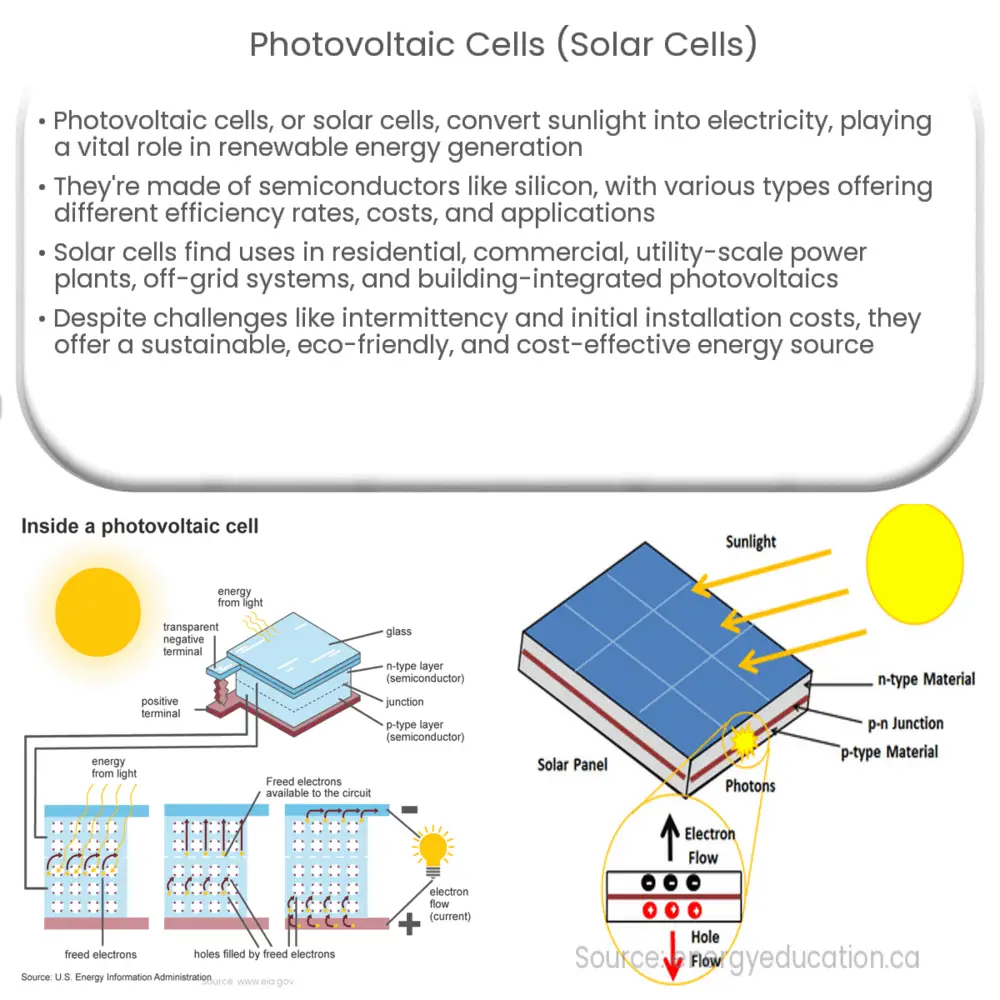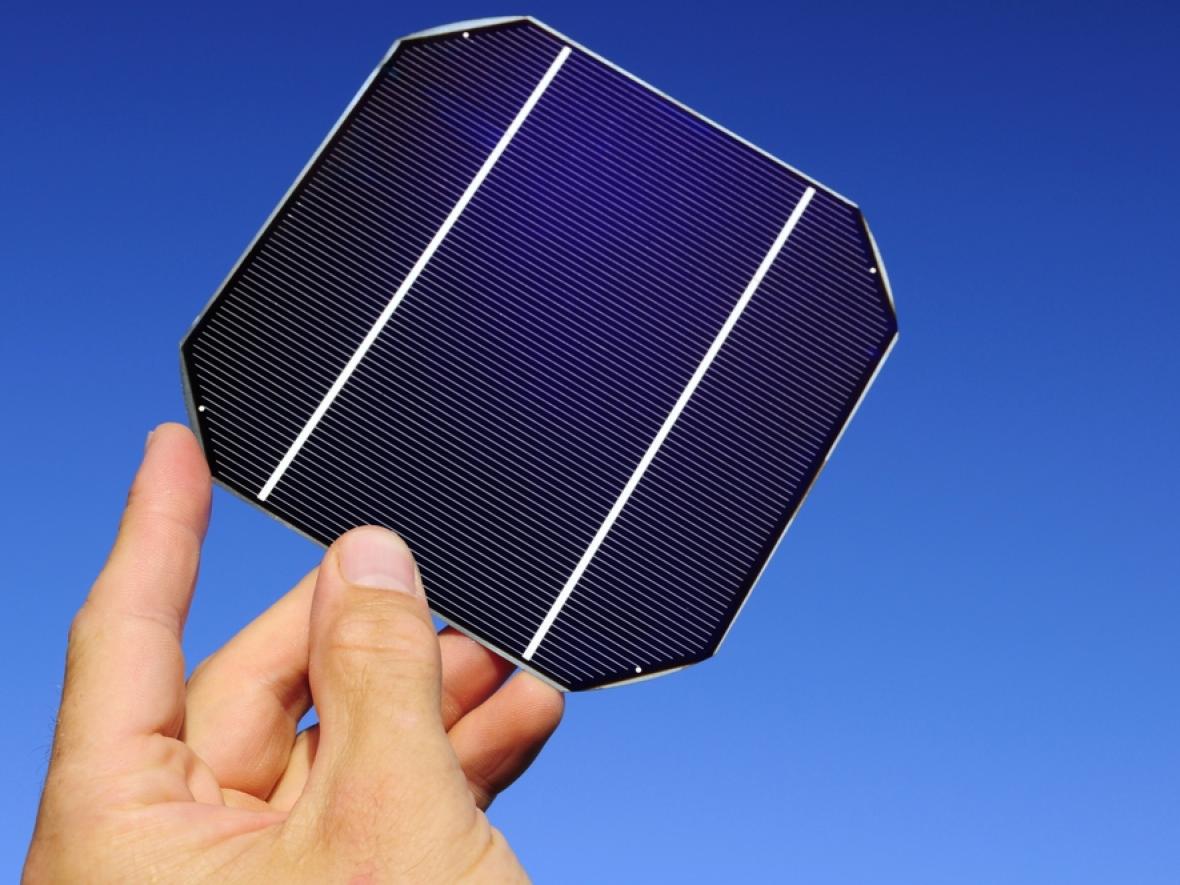Photovoltaic cells, often referred to as solar cells, are the fundamental building blocks of solar panels. These small devices are responsible for converting sunlight into electricity, a process that powers homes, businesses, and even spacecraft. The science behind these cells may seem complex, but their impact is straightforward and profound—reducing our dependence on fossil fuels and helping to mitigate climate change.
Why Learn About Photovoltaic Cells?
As the world grapples with the effects of global warming and the increasing cost of nonrenewable energy sources, understanding how photovoltaic cells work is more critical than ever. Photovoltaic cells have become a symbol of progress, representing a clean, renewable, and increasingly cost-effective energy source.

Photovoltaic cells are specialized devices designed to convert sunlight directly into electricity using the photovoltaic effect. This process occurs when photons, the energy particles in sunlight, strike a material—typically silicon—knocking electrons loose and generating an electric current. Photovoltaic cells are the heart of solar panels, making them integral to harnessing solar energy for practical use.
History and Evolution
The roots of photovoltaic technology trace back to the 19th century. In 1839, French physicist Alexandre Edmond Becquerel discovered the photovoltaic effect while experimenting with electrodes in a conductive solution. This breakthrough laid the groundwork for the first solar cells, developed in the 1950s by Bell Labs. Early cells were costly and inefficient, with efficiencies below 6%, limiting their applications to niche areas like powering satellites.
However, continuous advancements have transformed photovoltaic cells into a mainstream technology. Modern cells boast efficiencies of 20-25% for commercial use, with cutting-edge laboratory cells exceeding 40%. These improvements, coupled with decreasing costs, have made solar power an increasingly viable energy source globally.
How Do Photovoltaic Cells Generate Electricity?
The Photovoltaic Effect Explained
At the core of every photovoltaic cell is the photovoltaic effect, a phenomenon that allows the conversion of sunlight into electricity. Here’s a simplified breakdown of the process:
- Photon Absorption: When sunlight hits the solar cell, photons from the light are absorbed by the cell’s material, typically silicon.
- Electron Excitation: This absorption energizes electrons, causing them to break free from their atomic bonds.
- Electric Field: The cell’s internal electric field, created by the arrangement of materials (p-type and n-type silicon layers), directs these free electrons toward conductive layers.
- Current Generation: The flow of electrons generates an electric current, which is collected by conductive plates and wires for external use.
This seamless transformation of sunlight into electricity is what makes photovoltaic cells a cornerstone of solar power.
Key Components of a Photovoltaic Cell
A photovoltaic cell is a multilayered structure, with each layer playing a specific role in energy conversion. Here’s an overview:
- Semiconductor Material (Silicon): Acts as the core layer where the photovoltaic effect occurs.
- Conductive Contacts: Thin metal lines or plates on the cell’s surface that collect and transport electricity.
- Anti-Reflective Coating: Reduces sunlight reflection, ensuring maximum photon absorption.
- Encapsulation Layers: Protect the cell from environmental damage like moisture or mechanical stress.
- Backing Layer: Provides structural support and electrical insulation.
This sophisticated design enables photovoltaic cells to efficiently convert solar energy into usable electricity.

Breaking Down the Science Behind Photovoltaic Cells
Materials Used in Photovoltaic Cells
Semiconductors and Silicon
Silicon, a widely abundant element found in sand, is the primary material used in photovoltaic cells. Its unique properties as a semiconductor make it ideal for the photovoltaic effect. Silicon can conduct electricity under certain conditions while remaining an insulator under others, allowing precise control over electron movement.
Photovoltaic cells typically use two types of silicon layers:
- P-Type Silicon: Infused with elements like boron to create a positive charge by introducing “holes” (absence of electrons).
- N-Type Silicon: Infused with elements like phosphorus to provide an excess of free electrons, resulting in a negative charge.
The interface between these two layers, called the p-n junction, is where the electric field is generated, setting the stage for electricity production.
Other Materials in Photovoltaic Technology
While silicon dominates, other materials are used in specialized cells:
- Cadmium Telluride (CdTe): Popular for thin-film solar cells due to its high absorption rate and low material requirements.
- Perovskite Materials: Known for high efficiency and flexibility, these are rapidly emerging in research.
- Gallium Arsenide (GaAs): Used in space applications for its superior efficiency and durability in extreme conditions.
Advancements in Materials
Researchers are constantly seeking alternatives to silicon that are more efficient, less expensive, and environmentally friendly. Innovations such as organic photovoltaic cells and quantum dot solar cells promise significant improvements, although these technologies are still in developmental stages.
Types of Photovoltaic Cells
Photovoltaic cells come in various types, each with distinct features and uses:
- Monocrystalline Solar Cells
- Description: Made from a single, continuous silicon crystal, these cells are identifiable by their uniform black appearance.
- Advantages: High efficiency (15-22%) and space efficiency.
- Drawbacks: Higher cost compared to other types.
- Polycrystalline Solar Cells
- Description: Composed of multiple silicon crystals melted together, giving them a bluish hue.
- Advantages: More affordable production.
- Drawbacks: Slightly lower efficiency (13-18%) than monocrystalline cells.
- Thin-Film Solar Cells
- Description: Made by depositing thin layers of photovoltaic material onto substrates like glass or plastic.
- Advantages: Lightweight, flexible, and versatile for applications like building integration.
- Drawbacks: Lower efficiency (10-12%) and shorter lifespan compared to crystalline cells.
Comparison Table of Photovoltaic Cell Types
| Type | Efficiency | Cost | Best For |
|---|---|---|---|
| Monocrystalline | 15-22% | High | Limited space applications |
| Polycrystalline | 13-18% | Medium | Cost-sensitive projects |
| Thin-Film | 10-12% | Low | Flexible and lightweight needs |
The diversity in photovoltaic cell types ensures they can meet the needs of different users, from homeowners to large-scale industrial operators.

Practical Applications and Advantages of Photovoltaic Cells
Where Are Photovoltaic Cells Used?
1. Residential Solar Panels Photovoltaic cells have revolutionized residential energy systems. Solar panels, composed of interconnected photovoltaic cells, are commonly installed on rooftops to provide clean and sustainable energy for homes. These systems reduce electricity bills and contribute to energy independence. Many governments offer incentives, such as tax credits and subsidies, to encourage homeowners to adopt solar energy.
2. Commercial and Industrial Applications Large-scale installations, such as solar farms, rely heavily on photovoltaic cells to generate electricity for businesses and industrial operations. These systems often supply power directly to the grid or operate as off-grid solutions for remote facilities. Companies increasingly view solar energy as a way to meet sustainability goals while reducing operational costs.
3. Specialty Applications Photovoltaic cells are also used in innovative and niche applications:
- Space Exploration: Solar panels on satellites and space stations ensure a reliable power supply far from Earth.
- Portable Devices: Solar chargers for smartphones and gadgets leverage small-scale photovoltaic cells.
- Off-Grid Systems: Remote villages and emergency response units use solar-powered systems to access energy without traditional infrastructure.
Case Study: Solar Farm in California The Topaz Solar Farm in California, one of the largest in the world, generates enough electricity to power approximately 180,000 homes. This facility demonstrates the scalability of photovoltaic technology and its ability to contribute significantly to renewable energy goals.
Advantages of Photovoltaic Cells
1. Environmental Benefits Photovoltaic cells play a critical role in reducing greenhouse gas emissions. By converting sunlight into electricity, they eliminate the need for burning fossil fuels, which releases harmful pollutants into the atmosphere. Solar power is a cornerstone of the global effort to combat climate change.
2. Economic Impact While the initial installation costs of solar systems can be high, the long-term savings are substantial. Photovoltaic cells generate electricity for decades, often with minimal maintenance. Additionally, solar energy systems increase property values and provide a hedge against fluctuating energy prices.
3. Energy Independence Countries and individuals adopting photovoltaic technology can reduce their reliance on imported fossil fuels. This transition fosters energy security and supports local economies by creating jobs in manufacturing, installation, and maintenance.
Real-World Data: Solar Energy Growth According to the International Renewable Energy Agency (IRENA), global solar photovoltaic capacity reached approximately 1,000 gigawatts in 2022, marking a significant leap in adoption rates. This growth highlights the increasing recognition of photovoltaic cells as a reliable and sustainable energy source.

Challenges and Limitations of Photovoltaic Cells
Efficiency of Photovoltaic Cells
Factors Affecting Efficiency
The efficiency of photovoltaic cells, which measures how effectively they convert sunlight into electricity, is influenced by several factors:
- Sunlight Intensity: More sunlight increases energy output, but geographic location and weather conditions can limit exposure.
- Temperature: High temperatures can reduce efficiency as excessive heat interferes with the optimal performance of the materials in the cell.
- Material Quality: The type and purity of materials, particularly silicon, directly impact how much sunlight is converted into usable energy.
- Angle and Orientation: Solar panels must be installed at an optimal angle to capture the maximum amount of sunlight throughout the day.
Current Efficiency Ratings
Commercial photovoltaic cells typically achieve efficiencies between 15-25%, with high-end models reaching closer to 30%. While this may seem modest, researchers are exploring methods to push efficiency boundaries:
- Multi-Junction Cells: These combine different materials to capture a broader spectrum of sunlight, achieving efficiencies over 40% in laboratory settings.
- Concentrated Photovoltaics (CPV): Using lenses or mirrors to concentrate sunlight onto high-efficiency cells.
Environmental and Economic Challenges
1. Manufacturing Impact While photovoltaic cells are a clean energy source during operation, their production has environmental implications:
- Energy-Intensive Process: Manufacturing silicon requires high temperatures and energy, often derived from nonrenewable sources.
- Material Extraction: Mining for materials like silicon, cadmium, or rare earth elements can lead to habitat destruction and pollution.
Efforts are underway to improve the sustainability of production processes by utilizing recycled materials and renewable energy in manufacturing.
2. Initial Costs The upfront costs for photovoltaic systems, including solar panels, inverters, and installation, can deter some users. Although prices have declined significantly—by more than 80% over the last decade—the initial investment remains substantial for many households and businesses.
Solutions to Mitigate Challenges
- Government Incentives: Subsidies, tax credits, and rebates can offset costs for adopters.
- Innovative Financing Models: Options like power purchase agreements (PPAs) and community solar projects make solar energy more accessible.
- Recycling Initiatives: Recycling end-of-life solar panels can reduce waste and recover valuable materials for reuse.
Case Study: Recycling Photovoltaic Waste The EU has implemented strict guidelines for solar panel recycling, with specialized facilities reclaiming over 95% of materials like glass and silicon. This approach reduces waste and makes solar technology more sustainable over its lifecycle.